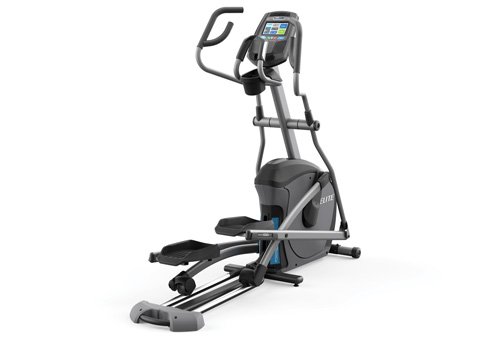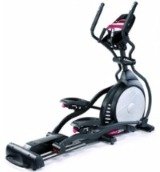Elliptical Trainer Resistance - How It Works, What to Look For
You know that elliptical trainer resistance can be changed to make physical effort harder during a workout but you may not know what it actually is, or what to look for when purchasing a home machine.
Fortunately, as long as we don’t get too technical, how an elliptical provides more resistance is fairly simple to understand. You might want to learn a bit about elliptical trainer resistance because it affects the smoothness and degree of difficulty of the ride.
Resistance is created by a braking system that works against the flywheel. Low-end machines use either manual or motorized brakes, while elliptical trainers that are more expensive are equipped with a quiet electromagnetic braking system.
The Types of Resistance
Budget-priced, non-motorized elliptical trainers have a manual brake system. To change the level of resistance, the user turns a knob that is attached to a tension cable that moves a U-shaped bracket magnet closer to the flywheel for more resistance, or away from the flywheel for less resistance.
The motorized brake system, also known as particle brakes, can be found on ellipticals priced between $600 and $2200. This automated system works on basically the same principles as the manual one, except the user presses a button on the console that commands a small motor to move the magnet.
The eddy current braking system is on most high-end home elliptical trainers priced above $1,800, including Sole ellipticals, as well as many health club units. Although they operate electrically, they transmit the torque mechanically.
The ECB technology works using an aluminum disk that spins freely between two variable magnetic fields, so there are no moving parts and no friction is created. As the user dials up stronger resistance on the console, the electromagnet, which is just centimeters from the flywheel, is exposed to higher levels of the magnetic current, and the resistance on the rotating flywheel increases.
They are more expensive, of course, but elliptical trainer resistance provided by an ECB system offers several advantages. Because it is an electromagnetic braking system, it is not only quiet and smooth, it responds quickly to new settings selected by the user, it is extremely durable, and there are no service issues.
The last type of elliptical trainer resistance consists of self-generating induction brakes, which are used in commercial units and some home models. These ellipticals require no electrical power since they don’t have motors; the user starts pedaling and that creates the power to run the console display, programs, and motor. With no cables running to outlets, they are ideal for health clubs as well as homes that strive for clean, green living.
Take a look at our best ellipticals to find a trainer with a high quality resistance system, to make sure you have good options to diversify your workouts.
Some other helpful articles for you:
Shopping Online for an Elliptical Trainer – Best Sites to Buy
Elliptical Trainer Buying Guide - 8 Features to Compare
UPDATE: New Year's Elliptical Sales are going strong!
SEE THE BEST CURRENT DEALS HERE

Best By Price Range
Under $500
$500 - $1000
$1000 - $2000
$2000 - $3000
$3000 - $4000+
Elliptical Buying Guide

8 Features to Compare
Brake Systems
Stride Length
Front vs. Rear Drive
Warranties
Consumer Reviews

Here is your chance to rant or rave about the elliptical you use at home or at the fitness center.
